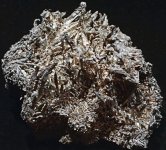- Thread starter
- #141
There are these carvings that have been discovered around the western united states that are in that video. It seems no one knows who put them there our what they mean I sure would like to find out what they mean and who did it.
I spent some time looking at these and I think the best clue, for solving the mystery, is that petroglyph of the capital M and the eye right below it that Sdcfia posted on post #55.








